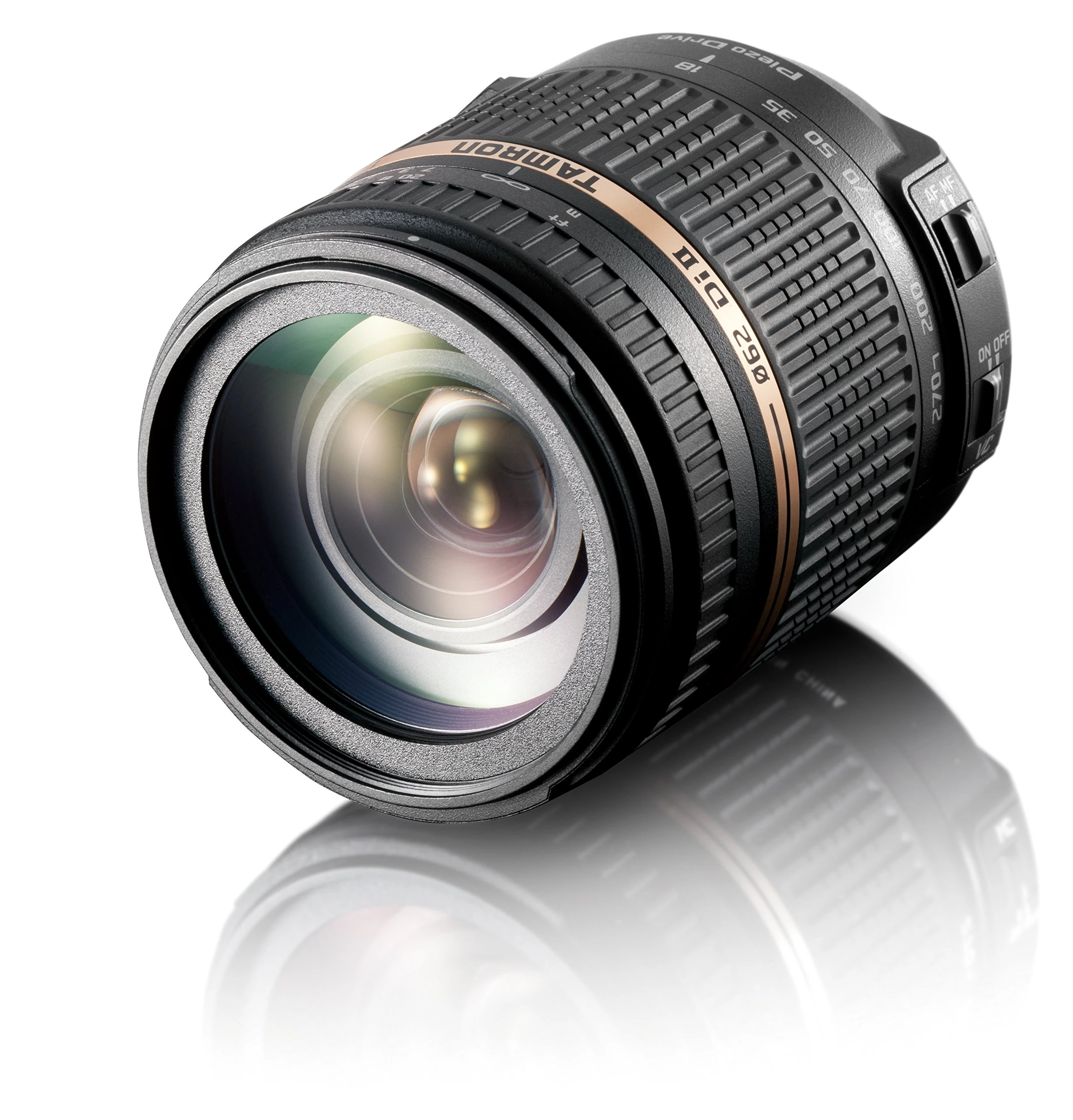Tamron AF 18-270mm f/3.5-6.3 Di II VC PZD LD Aspherical IF Macro Zoom Lens with Built in Motor for Nikon DSLR Cameras
Price History & Forecast
No Price Data Available
Price history will appear here once data is collected from Amazon.
Price Distribution
No price data available for histogram
Take Action
Product Description
Product Description The oustanding Tamron 18-270mm VC ultra zoom for APS-C format DSLRs has reached an astonishing new level of compactness, performance, and speed with the addition of PZD (Piezo Drive), an innovative ultrasonic autofocus motor based on an advanced piezoelectric design. The result is a lens that's light, and noticeably short and slim (filter diameter: 62mm), and provides fast, quiet auto-focusing. The following are the signature features that have made this amazingly versatile lens an ideal all-in-one solution for travelling photographers Piezo Silent Drive Mechanism All New Piezo Silent Drive Mechanism (PZD) The new PZD (Piezo Drive) piezoelectric drive marks another Tamron first in its autofocus SLR lenses, an internal standing wave ultrasonic motor system. Innovations to reduce parts and simplify operation also contributed to the lens’s reduced size and weight. Light and small, the piezoelectric drive uses a standing wave, instead of a travelling wave, to turn and extend the piezoelectric element. Thus the entire element moves in a standing wave pattern, moving the metal tip (the contact surface) in an elliptic motion. The friction of this movement moves the rotor for a smooth, precise autofocus. Ultrasonic motors are divided into two categories depending on the principle that generates the energy to move the drive: traveling wave motors and standing wave motors. Traveling wave motors include the ring type ultrasonic motor used in the recently launched 70-300mm F/4-5.6 VC USD as well as other lenses, but this lens with its newer technology, the PZD (Piezo Drive), functions on the standing wave principle. A standing wave ultrasonic motor utilizes high-frequency voltage to extend and turn the piezoelectric (piezoceramic) element, thus moving the entire element in a standing wave movement. The metal tip is the contact point of the element to the rotor, and moves in an elliptic motion from the swiveling motion of the moving element, and the friction from this motion turns the rotor. Standing wave ultrasonic motors have the distinct advantage of being smaller than their traveling wave counterparts, and therefore allow a more compact SLR lens size. 15x Zoom Powerful 15x Zoom This lens covers an extremely broad range of focal lengths, from an extra-wide 18mm length to a telephoto 270mm length (the 35mm equivalent of 28mm to 419mm). The resulting 15x zoom ratio is the world's largest, representing a wide cross section of Tamron high-power zoom design technologies. Additionally, the vibration compensation works throughout the entire zoom range, giving you the freedom to create a wide variety of images. The lens lets users capture once in a lifetime panoramic landscape images or close-up pictures of children smiling, all without getting too close to the subject or changing lenses. Other details include a macro magnification range of 1:3.5, a minimum focusing distance of 19.3 inches, and a 72mm filter diameter. Di II Tamron Di-II lenses are engineered expressly for digital SLR cameras with image sensors commonly referred to as APS-C, measuring approximately 24mm x 16mm. Rendering an ideal image circle for APS-C sensors, Di-II lenses are also include properties to optimize digital imaging performance. These lenses are not designed for conventional cameras or digital cameras with image sensors larger than 24mm x 16mm. Low Dispersion Glass Low Dispersion Glass (LD) Low dispersion (LD) glass elements in a lens help reduce chromatic aberration, i.e. the tendency of light of different colours to come to different points of focus at the image plane. Chromatic aberration reduces the sharpness of an image, but glass with an extremely low dispersion index has less of a tendency to separate (defract) a ray of light into a rainbow of colours. This characteristic allows the lens designer to effectively compensate for chromatic aberration at the center of the field (on axis), a particular problem at long focal lengths (the telephoto end of the zoom range), and for lateral chromatic aberration (towards the edges of the field) that often occurs at short focal lengths (the wide-angle end of the zoom range.) Internal Focusing System (IF) Internal focusing provides numerous practical benefits to photographers, including a non-rotating front filter ring that facilitates the positioning of polarizing and graduated filters, and more predictable handling as the lens length does not change during focusing. Crucially, Tamron’s Internal Focusing (IF) system provides a much closer minimum focusing distance (MFD) throughout its entire focusing range. IF also improves optical performance by minimising illumination loss at the corners of the image field, and helps to suppress other aberrations that become more troublesome at different focusing positions. Zoom Lock (ZL) Tamron's Zoom Lock (ZL) function is a simple convenience feature that prevents undesired extension of the lens barrel when carrying the camera/lens on a neck st
Key Features
Silent ultrasonic Piezo Drive motor
Vibration Compensation
Wide 18-270mm focal range
Ideal travel lens. Angle of View (diagonal): 75゜33' - 5゜55'
24% more compact and 100g lighter than its predecessor the 18-270mm VC (Model B003)
Product Details
- Brand
- TAMRON
- Model
- B008N
- Format
- Electronics
- ASIN
- B004FLJVYQ
- Domain
- Amazon UK
- Release Date
- 11 February 2011
- Listed Since
- 11 December 2010
